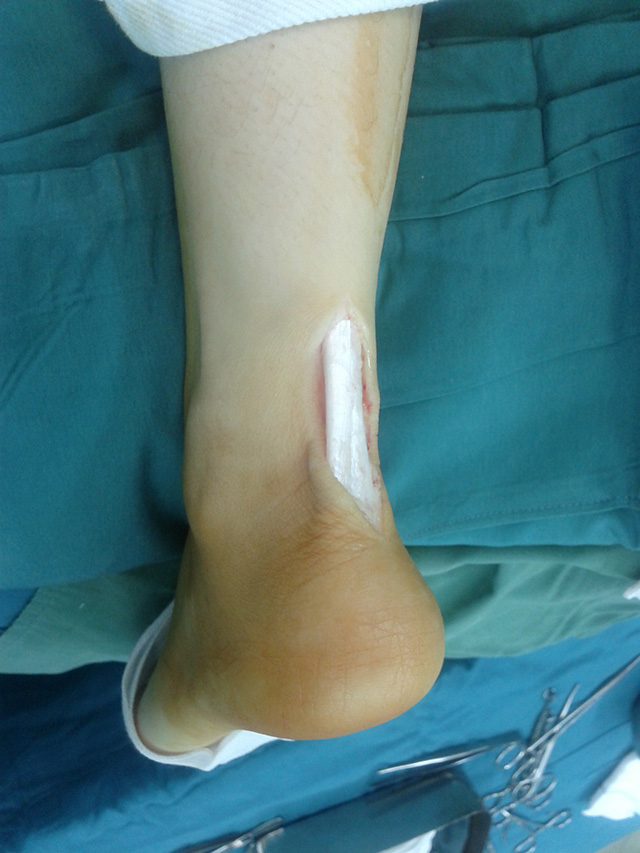After seeing a few broken necks, many broken bones, repairing torn tendons and giving advice to people injured doing CrossFit training, I decided to go a step further and create Sports Medicine for the Sports of Fitness. I see a lot of injured athletes, eg with football, but it seems people are aware of the injury risk/prevalence in Football. Not so with CrossFit. My colleague orthopedic surgeons and I are seeing relatively high injury rates in people who do CrossFit workouts. It is what it is. As someone who does CrossFit, and has hurt himself doing so, I can attest to the discipline it takes to do it well and do it safely. Injury is not inevitable (only death and taxes are right?), but it is lurking.
CrossFit is not to blame, it's how it's done which is at issue. While CrossFit is not a sport per se, it is a fitness program. ESPN and Reebok are capitalizing on the economics of its integration into the Sport of Fitness, but injuries happen in all of the Beach Body programs too, they are just not as common in my practice. For whatever reasons, I see a lot of CrossFit athletes in my practice, so that’s the focus of most of my health and sports medicine education.
Through this page and our Sports Medicine for the Sports of Fitness community at Google+ we are sharing testimonials, tips and technique case reports of some injuries that are relevant to CrossFit and the sport of fitness.
From my clinical practice, the most common reasons I see for injury include three main types: acute, chronic/overuse and acute on chronic.
Acute injuries are obvious, as something pops, rips or tears. A sudden ‘ouch’ or what was THAT? Chronic or overuse injuries are actually more common and can relate to many factors, as below. Acute-on-chronic injuries occur when there was a problem brewing under the surface to begin with and the exercise exacerbated something and immediate damage occurred.
The most common reason for injuries include:
Rx or the prescribed weight/reps is only reasonable for a subset of people. There’s a psychological factor present in many of us, whether ego, self steem or competitiveness, that drives us to push our selves to attempt the prescribed weight. This is a bad idea in some cases.
Most people do CrossFit year round. If you treat it like a Sport...ie a Sport of Fitness, then you might consider that there is an 'off season,' pre-season, regular season, and a time for playoffs/championships - ie, high intensity. Going for goals, PR's or max achievements might be best reserved for certain times or cycles in training. Going for PR's randomly throughout the year may not be best for the body. It might make more sense for you to have cycles of training where workloads increase and frequency of practice/intensity of training varies.
You can't maintain awesome technique and form, improve your weaknesses, and push up to your limits without expecting some periods of tissue breakdown. Consider engaging with CrossFit as you'd engage in other sports.
Not having strength to maintain “Active Shoulders.”
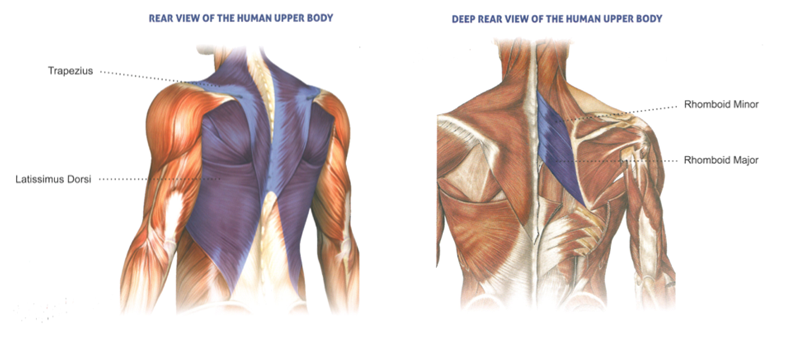
The strength around the shoulder capsule and stability of that joint is very important to keep the joint safe during many CrossFit exercises, particularly things like kipping pullups, overhead squats, shoulder barbell or dumbell presses.
Active shoulders can mean: externally rotating your shoulders, tightening the capsule, elevating the scapula (shoulder blade) and squeezing the blades together. The extent depends upon the movement.
Not keeping the core tight.
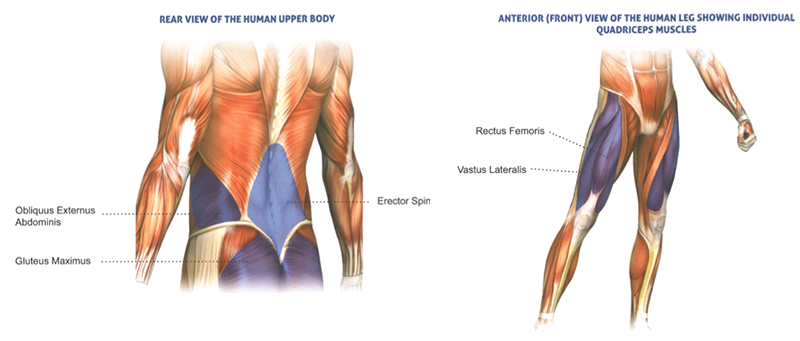
Maintaining active stabilization of the trunk, abs, lumbar area and pelvis. Keeping a consistent distance between the xyphoid process of the ribs and the symphysis pubis of the pelvis. This means not going in to too much flexion or extension in the low back. Don’t put your back into it.
Not scaling appropriately:
Scaling isn’t only intended to help you complete a workout; it’s also there to help you perform the workout as it was intended. Some workouts are designed for speed and others are designed for strength, some for both. If it takes you a long time to do something with proper form, but get the strength that’s right for you, then scale, even if it takes you a long time. If you need a lighter weight in order to complete the movements with good form, but quickly, scale down the weight. You shouldn’t take 20 minutes to do a workout that’s designed for five minutes. Scale properly.
Cherry Picking WODs
If you pick and choose workoouts based upon what you are good at, ie your strengths, you will lose out on developing your weaknesses. Your inconsistency will keep you weak in certain areas and therefore imbalanced. Don’t skip your weaknesses. Improve them, then you don’t have any.
Inadequate Rest
CrossFit headquarters suggests 3 days on, 1 day off. That doesn’t work for everyone. If you are feeling fatigued, try working out every other day..or take a few days off consecutively BEFORE you feel things tearing. Learning body awareness and listening to your body’s subtle messages can keep you out of my office.
comments powered by DisqusOur thanks to FlexBuilding: A New Way to Move. A New Way to Live. for providing the anatomical images for this website.
There are some movements that seem to be particularly associated with a higher risk injury. I will illustrate a couple here but we'll explore injuries and surgery more in detail in the Google+ community.
Case 1 - Elbow: Distal Biceps Tendon Rupture
The "skin the cat" movement on the rings has been a killer of some shoulders and elbows. In this gymnastic movement, you pull yourself through the rings and sort of 'flip over' to wind up in a position as if you were Iron Man flying back to earth.
Here's a ruptured biceps tendon I repaired after such a movement caused a "pop" in the elbow. Athlete was able to return to WOD with restrictions in 6 weeks and full workout at 4 months (though we generally recommend 6 months)
Injury caused by skin the cat:
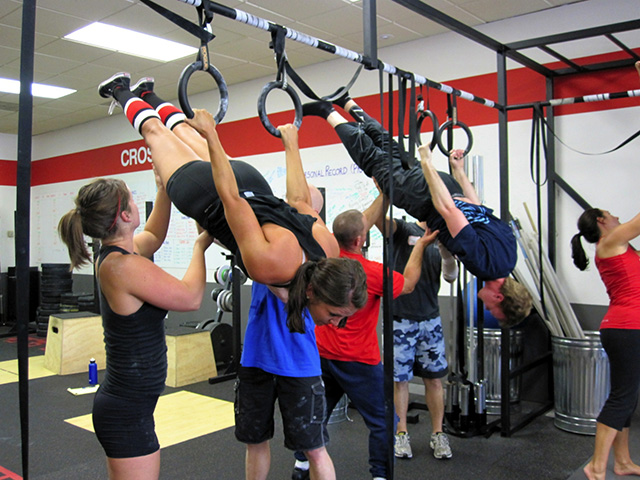
Before repair. Torn tendon
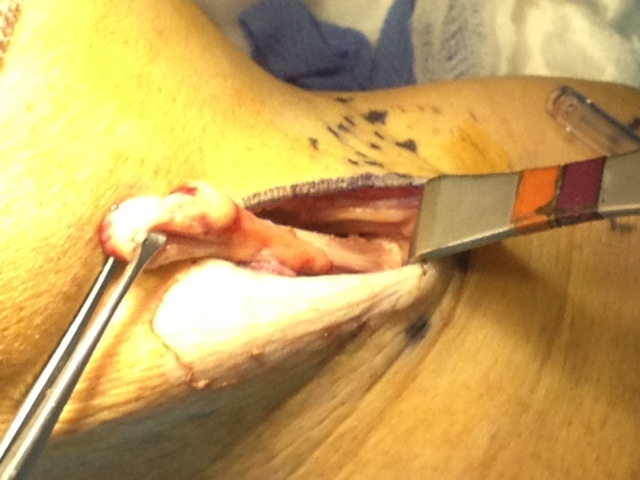
After re-attachment to bone:

Case 2 - Shoulder: Torn Latissimus Dorsi Tendon
The "muscle up" movement on the rings is explosive and requires powerful lats, among other things. In this gymnastic movement, you pull yourself from a hanging position and press up from a dip - to wind up with elbows fully extended.
Here's a ruptured latissimus tendon I repaired after such a movement caused a "pop" in the Shoulder. Athlete was able to return to WOD with restrictions in 12 weeks. Full work out capacity should be expected around 9 months.
Injury caused by muscle up:

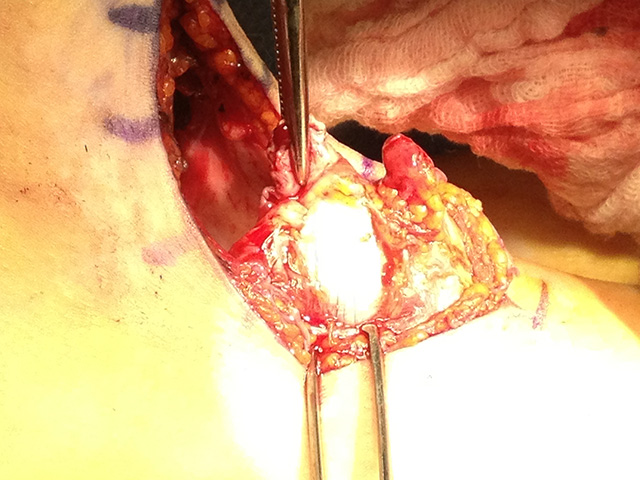
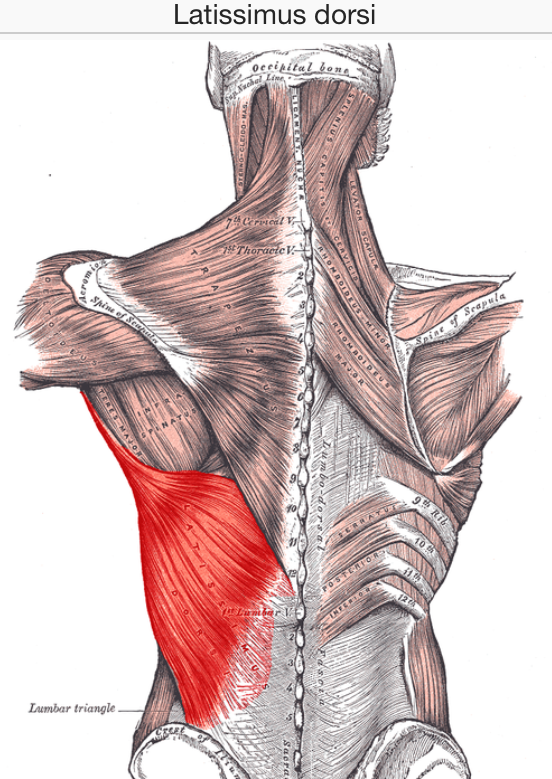
Case 3 - Ankle: Achilles Tendon Rupture.
This is a torn Achilles tendon I repaired after an athlete felt a ‘pop’ landing from a box jump. The Achilles tendon is the largest tendon about the ankle.It’s muscles from the Gastrosoleus complex (calf muscle) are linked to the heel bone (calcaneus) through the Achilles Tendon. It is vulnerable to pop with a sudden explosive contraction and may accompany a sudden change from elongation to contraction to elongation, as in jumping down off a box and jumping right back up on the box without a pause at the bottom. No tip on prevention other than stretch, stretch, stretch before and after exercise.
Shredded ruptured Achilles:
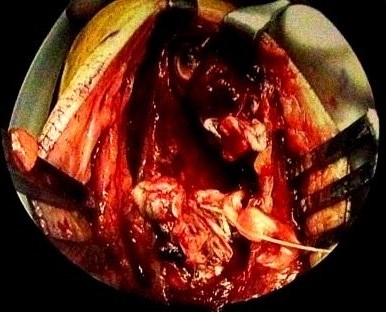
After repair through a 1.5 inch incision:

A normal Achilles tendon:
